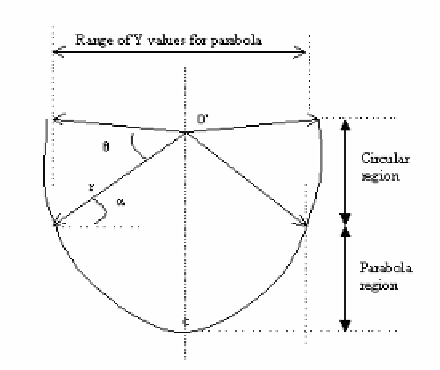Information Technology Reference
In-Depth Information
gorithm is so-called 'snake' [19, 29]. It is a general algorithm for matching a de-
formable model to an image by means of energy minimization. However, for this
particular problem, the snake algorithm suffers from various local optimization
problems associated with initialization, poor convergence to concave boundaries,
vulnerability to image noise and has a high computational complexity. Since reg-
ular tongue shapes are known, it makes sense to apply a Deformable Template
for segmentation [49, 34]. Deformable Template models have been successfully
used in tracking objects, such as vehicles and human figures. It is found that they
are more robust against noise and local shape distortions than snake algorithms.
The tongue has a specific shape with “landmark points” lying within a certain
variance of the trained set. The model allows deformation of the class of objects
by learning patterns from the training set of correctly annotated images.
Models of more specific classes of shapes demand the use of some hard con-
straints and “default” shapes which are more interesting than a simple straight
line. This can be achieved by using a parametric shape-model
s
(
X
), with rela-
tively few degrees of freedom, known as a “deformable template”. The template
is matched to an image, in a manner similar to the snake, by searching for the
value of the parameter vector
X
that minimizes the energy
E
(
X
). The goal of
the algorithm is to minimize the energy function:
E
=
E
int
+
E
im
+
E
con
,where,
E
int
is internal energy of the contour due to bending or discontinuities,
E
im
is
energy due to image forces and
E
con
is energy due to external constraints.
In our study, we created a deformable template as shown in Fig. 2 and fit
these templates to the image of the tongue by adjusting the various parameters
that create the template of the tongue.
As shown in Fig. 2, we have the following parameters:
x
o
: center
x
-coordinate
of the parabolic region.
y
o
: center
y
-coordinate of the parabolic region.
α
:angle
(in radians) between the
x
-axis where the parabola ends and the line joining
OO' equal to the length of the radius of the circle.
r
: radius of the circular
portion (determined by
a
and
α
).
θ
: Angle (in radians) spanned by the circular
arcs. Equation of parabola:
X
=
aY
2
,where
a
is a parameter that adjusts
Fig. 2.
Deformable Template.

Search WWH ::

Custom Search